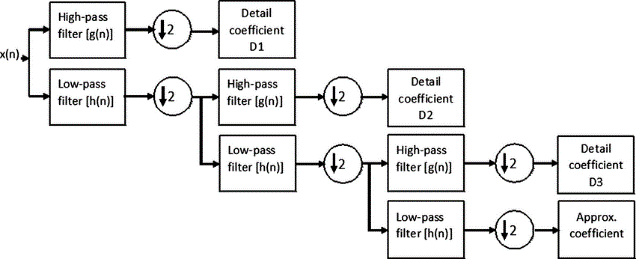Optimizing Robustness and Invisibility in Digital Image Watermarking: A SVM-Based Multi-Level DWT and SVD Approach
Main Article Content
Abstract
This research introduces a new digital image watermarking approach that utilizes discrete wave transformation (DWT), Support vector machine, and singular value decomposition. The method improves robustness under various assault situations by using the SVM classifier during watermark extraction. Multi-level DWT splits the host picture into sub-bands when embedding, and the coefficients are used as input for SVM. After SVD, the scaling factor embeds the watermark. Comparing the proposed approach to existing research under various attacks, the experimental findings demonstrate that it strikes an equilibrium between robustness and invisibility for watermarks of varying sizes. Support Vector Machine is a contemporary category of machine learning techniques that is extensively employed for the purpose of solving classification problems.
Article Details
References
Taha, D. B., Taha, T. B., & Al Dabagh, N. B. (2020). A comparison between the performance of DWT and LWT in image watermarking. Bulletin of Electrical Engineering and Informatics, 9(3), 1005-1014.
Islam, M., Roy, A., & Laskar, R. H. (2020). SVM-based robust image watermarking technique in LWT domain using different sub-bands. Neural Computing and Applications, 32, 1379-1403.
Kumar, U., Yadav, I., Kumari, S., Kumari, K., Ranjan, N., Kesharwani, R. K., ... & Pal, S. K. (2015). Defect identification in friction stirs welding using discrete wavelet analysis. Advances in Engineering Software, 85, 43-50.
Islam, M., & Laskar, R. H. (2018). Geometric distortion correction based robust watermarking scheme in LWT-SVD domain with digital watermark extraction using SVM. Multimedia Tools and Applications, 77, 14407-14434.
Pandey, P., Kumar, S., & Singh, S. K. (2014). Rightful ownership through image adaptive DWT-SVD watermarking algorithm and perceptual tweaking. Multimedia tools and applications, 72, 723-748.
Bhatnagar, G., Wu, Q. J., & Atrey, P. K. (2013). Secure randomized image watermarking based on singular value decomposition. ACM Transactions on Multimedia Computing, Communications, and Applications (TOMM), 10(1), 1-21.
Chen, Y. H., & Huang, H. C. (2015). Coevolutionary genetic watermarking for owner identification. Neural Computing and Applications, 26, 291-298.
Sofia Martinez, Machine Learning-based Fraud Detection in Financial Transactions , Machine Learning Applications Conference Proceedings, Vol 1 2021.
Mechelli, A., & Viera, S. (Eds.). (2019). Machine learning: methods and applications to brain disorders. Academic Press.
Ansari, I. A., & Pant, M. (2017). Multipurpose image watermarking in the domain of DWT based on SVD and ABC. Pattern Recognition Letters, 94, 228-236.
Zhang, H., Wang, C., & Zhou, X. (2017). A robust image watermarking scheme based on SVD in the spatial domain. Future Internet, 9(3), 45.
Zainol, Z., Teh, J. S., & Alawida, M. (2020). A new chaotic image watermarking scheme based on SVD and IWT. Ieee Access, 8, 43391-43406.
Moeinaddini, E. Selecting optimal blocks for image watermarking using entropy and distinct discrete firefly algorithm. Soft Comput. 2019, 23, 9685–9699
Sharma, V.; Mir, R.N. An enhanced time efficient technique for image watermarking using ant colony optimization and light gradient boosting algorithm. J. King Saud-Univ.-Comput. Inf. Sci. 2019.
Dixit, A., Agarwal, R. P., & Sharma, B. K. (2023, May). Hybridization of Discrete Cosine Transform and Principal Component Analysis to Achieve Digital Watermarking. In 2023 International Conference on Disruptive Technologies (ICDT) (pp. 527-530). IEEE.

